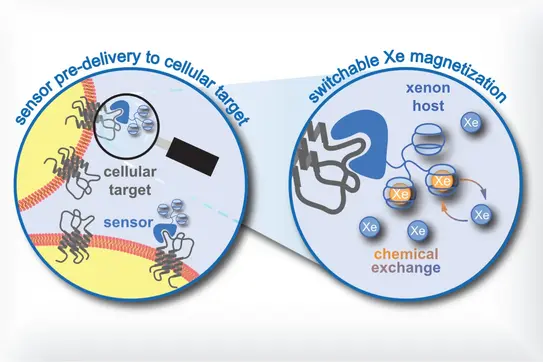Xenon Biosensors
NMR signals of the noble gas xenon react extremely sensitively to their molecular environment and are therefore suitable as a sensor for NMR contrast agents with high specificity. For this purpose, xenon is reversibly enclosed in molecular cages that bind specifically to a certain marker for cancer cells, for example.

To this end, we functionalize Xe hosts to enable, for example, the binding of such reporters to molecules of biochemical relevance. The "capture" of the Xe by the sensor is reflected in a change in the resonance frequency of the bound Xe. Spacers between the cage and the binding unit are optimized in length and structure for sensitive NMR detection. They are also equipped with additional functional units such as fluorescent dyes.
The detection of the sensors via the Hyper-CEST method preserves the chemical shift information and enables the separate readout of different sensors.